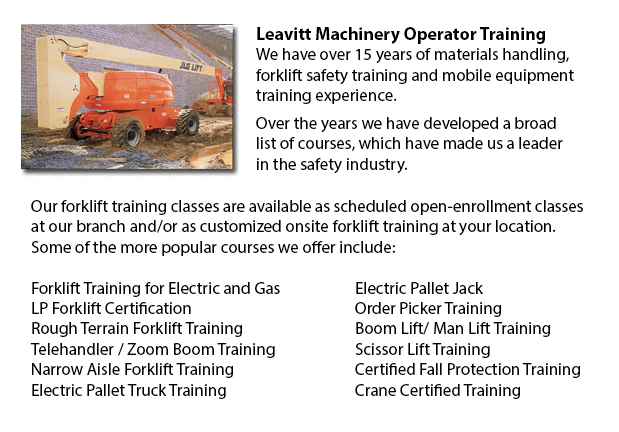
Prince George Aerial Platform Training - Aerial platform lifts are able to accommodate many tasks involving high and tricky reaching spaces. Usually used to carry out regular repair in structures with lofty ceilings, prune tree branches, raise burdensome shelving units or fix phone cables. A ladder might also be used for many of the aforementioned tasks, although aerial platform lifts offer more security and stability when correctly used.
There are a few different types of aerial hoists available, each being able to perform moderately unique jobs. Painters will usually use a scissor lift platform, which can be used to reach the 2nd story of buildings. The scissor aerial platform lifts use criss-cross braces to stretch out and lengthen upwards. There is a table attached to the top of the braces that rises simultaneously as the criss-cross braces elevate.
Cherry pickers and bucket lift trucks are another type of the aerial lift. Commonly, they contain a bucket at the end of a long arm and as the arm unfolds, the attached bucket lift rises. Forklifts use a pronged arm that rises upwards as the lever is moved. Boom lift trucks have a hydraulic arm that extends outward and lifts the platform. All of these aerial hoists have need of special training to operate.
Training programs offered through Occupational Safety & Health Association, known also as OSHA, cover safety steps, system operation, repair and inspection and machine cargo capacities. Successful completion of these education courses earns a special certified certificate. Only properly certified people who have OSHA operating licenses should run aerial platform lifts. The Occupational Safety & Health Organization has developed rules to maintain safety and prevent injury when using aerial hoists. Common sense rules such as not utilizing this apparatus to give rides and making sure all tires on aerial platform lifts are braced in order to hinder machine tipping are mentioned within the rules.
Sadly, statistics show that over 20 operators die each year while operating aerial hoists and 8% of those are commercial painters. The majority of these accidents are due to improper tire bracing and the lift falling over; for that reason a lot of of these deaths were preventable. Operators should ensure that all wheels are locked and braces as a critical safety precaution to prevent the machine from toppling over.
Marking the neighbouring area with visible markers have to be utilized to safeguard would-be passers-by so they do not come near the lift. Additionally, markings must be placed at about 10 feet of clearance between any electrical cables and the aerial lift. Hoist operators must at all times be appropriately harnessed to the hoist when up in the air.
-
Prince George Telehandler Operator Training
Prince George Telehandler Operator Training - Telehandler forklifts or Telescopic Handler forklifts are common industrial machines found in various construction industry settings. The telehandler is a useful machinery and makes for a valuable tool wh... More -
Skid Steer Loader Certification in Prince George
The engine powered skid-steer loader comprises a small and rigid frame, equipped with lift arms that could attach to many industrial attachments and tools to execute several labor saving tasks. Normally, skid-steer loaders are four-wheel drive vehicl... More -
Prince George Telehandler License
Prince George Telehandler License - The telescopic handler or telehandler is a generally utilized machine in agricultural and industrial applications. This machine is the same in look to a forklift and also works in a similar manner, although telehan... More -
Prince George Manlift Ticket
Prince George Manlift Ticket - The Elevated Platforms and Manlifts Certification course helps to provide the needed training on the work practices, safe operating procedures, rules and regulations regarding the everyday activities for the operators o... More -
Prince George Manlift Operator Training
Prince George Manlift Operator Training - A specialized kind of hydraulic platform is referred to as an aerial lift or a man lift. It is designed to hoist an individual vertically up and down and thus, is likewise called a vertical personnel lift. Th... More -
Prince George Forklift Safety Training
Prince George Forklift Safety Training - Individuals wanting work in industries that utilize forklifts have to undergo a forklift safety training course prior to becoming a certified operator of a lift truck. There are many ways to go about obtaining... More -
Prince George Boom Lift Certification
Prince George Boom Lift Certification - The use o elevated work platforms allow for maintenance operations and work to be performed at elevated work heights which were otherwise unreachable. Workers making use of boom lifts and scissor lifts could be... More -
Prince George Crane Training Schools
Prince George Crane Training Schools - We have designed various programs for Mobile Crane Operation at our Crane Training Schools. These programs are recommended for the skilled operator who needs certification or re-certification, and for inexperien... More

Forklift Certification Prince George
TOLL FREE: 1-888-254-6157
Prince George, British Columbia
forkliftcertificationprincegeorge.com
Email Us
About Us


